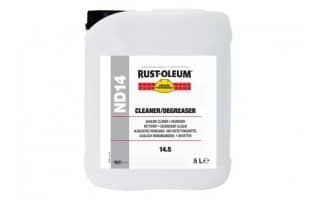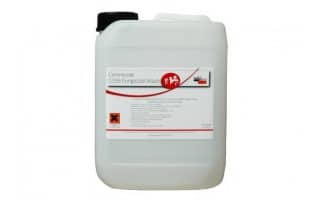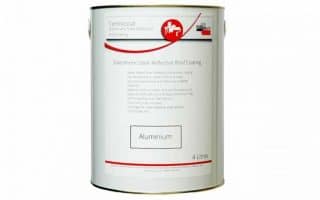In an uninsulated building such as an industrial unit or garage, the rise in temperature caused by solar heat can make the interior conditions uncomfortable. This temperature increase leads to a higher carbon footprint and running costs. This results in cooling devices such as air conditioning units and fans being brought in to lower the room temperature.
Increasingly today architects are specifying solar reflective finishes for external cladding systems like (EIFS) Exterior Insulation and Finish Systems. EIFS are a popular highly effective way to insulate a building to achieve significant energy savings. The use of solar reflective paint in this system provides the advantage of increasing the durability as harmful UV rays and heat is reflected away.
The sun does not only emit light it also emits heat. When the sun’s radiant heat is absorbed by an unreflective roof, it raises the temperature of the substrate. The buildings fabric absorbs the heat, thereby raising the internal room temperature.
During the summertime, a standard black felt roof can reach temperatures in excess of 65°C. By applying a solar reflective paint coating you can help lower this temperature by reflecting this radiant solar heat.
Effects Of Thermal Changes On Roofs
If the roofs surface temperature changes too much, it can result in cracks forming. Consequently, it can lead to a shortened protection period of the façade or roof.
Applying a solar reflective paint coating can eliminate many of the aforementioned issues. A solar reflective paint coating will make a building more thermally efficient and environmentally friendly. A thermally efficient building is also more comfortable to inhabit and in the case of industrial and commercial premises a more comfortable and efficient property to work in.
How Does Solar Reflective Paint Work?
Solar reflective paint is currently available in 2 finishes, a silver and a white. The silver finish is often a solvent based paint suitable for application onto roofs that are subject to pooling water. The white is a water based acrylic paint that can only be applied to roofs that have a pitch that is greater than 1 degree and drains sufficiently.
The pigments used to formulate solar reflective paints are designed to reflect the suns UV rays and radiant heat. In some cases these types of coatings can dissipate up to 70% of the radiant heat. By reflecting the sun’s rays and dissipating the radiant heat the internal temperature will be significantly lower.
Increased durability of the substrate is a further benefit of this effect. This will be as the paint will protect the roof from heat and UV degradation.
Below is the process for applying a solar reflective coating from preparation through to application. We will also discuss factors to consider when selecting a solar reflective roof coating system for your project.
Choosing The Correct Solar Reflective Paint System
Promain can offer solar reflective coatings from leading manufacturers Centrecoat, 3M, Coo-Var, Rust-Oleum and Bedec. It is important to ascertain the type of material your roof is before you choose your paint.
Roofs are generally constructed from roof tiles, roof sheets (such as steel and fibreglass), roofing felt, concrete and even mastic asphalts. It is important to check if the paint you intend to apply is compatible with the type of roof material your roof is constructed from.
You can find details on compatibility within the manufacturers data sheets. They are available for download on Promain’s website.
It is also important to assess the condition of your roof prior to applying a solar reflective paint. Make good and carry out any repairs required such as filling cracks or repairing leaks before applying your chosen coating.
Elastomeric coating or coatings that can stretch and flex, such as the Rust-Oleum Dac Hydro Alu are ideal for applying to roofs with movement or flexing. They are able to expand and contract with the ebb and flow of the roof resisting cracking and splitting. Many of our solar reflective coatings are elastomeric and in some cases such as the Rust-Oleum Dac Hydro Alu can stretch by up to 400%.
How To Apply A Solar Reflective Roof Paint
1. Preparation
Before application of your chosen finish, you will need to prepare the substrate.
The first step would be to undertake any repair required. Any crack or split should be filled with Rust-Oleum Elastofill Acrylic Jointing Compound.

These repairs will need to be followed by a good clean, ideally with a pressure washer in combination with a cleaner and degreaser such as Rust-Oleum ND14.
You will need to ensure the surface is completely clean and free from any dirt, loose particles or areas of contamination such as grease or oils.
You should clean and degrease old coatings in the same way. Then sand them to produce an adequate “key”. Ensure you remove all loose, flaking material and treat bare areas as a new substrate then prepare accordance with the manufacturers recommendations.
2. Treat The Roof With A Fungicidal Wash
The next step would be to treat the roof with a fungicidal wash to eradicate any algae, mould or spores from the surface. Leaving the roof untreated can cause the paint coating to delaminate leading to cracking and peeling.
 We would recommend using Centrecoat GS36 Fungicidal Wash. To use, dilute at a ratio of 20-1 with clean water. Then using a back sprayer or watering can, coat the entire surface and leave to completely dry.
We would recommend using Centrecoat GS36 Fungicidal Wash. To use, dilute at a ratio of 20-1 with clean water. Then using a back sprayer or watering can, coat the entire surface and leave to completely dry.
Following the completion of the above surface preparation you are now ready to apply the paint.
3. Application Of Your Solar Reflective Coating
Before application of the paint you will need to have favourable weather conditions. The ideal conditions for painting are temperatures of 10-15 degrees Celsius, maximum humidity of 80% with no rain, fog or wet weather forecast.
Below we have detailed the application process for Centrecoat Elastomeric Solar Reflective Roof Coating.

This paint is a water based solar reflective paint offers up to 400% elasticity with a silver aluminium finish. You can apply this paint to most roofing substrates as well as existing coatings. Before application of the paint, prepare the roof as described above. If the surface is partially porous such as concrete sheeting roof, apply a coat of Rust-Oleum Primer 44HS to even out the porosity and improve adhesion.
Following the above preparation and/or primer coat use a long pile roller to apply a coat of Centrecoat Elastomeric Solar Reflective Roof Coating.
If there is any stagnated water on the surface, the paint coating should be embedded with Rust-Oleum Dacfill-Mesh or fibreglass matting to provide additional strength.
Method
You can achieve this by laying the mesh out over the roof and back rolling into the first coat. You should allow the first coat to cure for 24 hrs. After allowing the first coat to cure apply a second using the same method. Ensure a coverage rate of 1 to 1.5 litres per m2 for waterproofing or 0.3 – 0.5 litres per m2 for decorative. The coating will then need to left to dry.
If you have a roof or façade you would like to coat with a solar reflective paint and would like further advice, please do not hesitate to contact our manufacturer trained technical team on 01462 421 333 option 2. Our technical team can specify a coating system based on your individual requirements. They are available on the phone during working hours to providing advice and guidance on the entire installation process.

